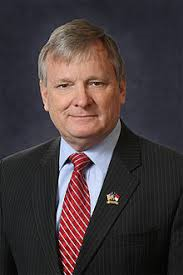
By N.C. Treasurer Dale R. Folwell, CPA
One of the things I enjoy the most about my job as keeper of the public purse is the opportunity to meet retired public-service employees whose years of hard work provide the backbone of our state and local governments. Their dedicated service might have been unheralded, but it hasn’t gone unnoticed.
That’s why I take my obligation to preserve and protect the state pension plan for this and future generations very seriously. North Carolina Retired Governmental Employees Association members and other public-service retirees deserve no less in their Golden Years.
So I’m pleased to tell you about recent landmark changes to the state and local government pension systems designed to eliminate $18.4 billion in unfunded liabilities over the next 12 years. These essential and long-overdue steps will ensure we have enough money in the pension plan to cover the monthly retirement checks we have promised to deliver without fail.
The governing boards of the Teachers’ and State Employees’ Retirement System and the Local Governmental Employees’ Retirement System voted unanimously on Thursday, Jan. 28, to reduce the assumed rate of return on investments from 7% annually to 6.5%, which more accurately reflects actual earnings.
What is important to know is that when the assumed rate of return is set higher than the earnings that are achieved, the deficit increases between pension plan assets and what is needed to pay future retiree benefits.
It is particularly critical to narrow that gap now because people are retiring earlier and living longer, in many cases being retired longer than they actually worked. Retirees collecting from the pension system now outnumber the active employees paying into the plan. That puts additional pressure on fulfilling payment obligations.
You might be shocked to learn that the unrealistically high rate of return assumption hasn’t been achieved on average for the past 20 years. Lowering that goal to a more realistic expectation is part of my administration’s transparent strategy to eliminate unfunded liabilities — that gap between assets available and promises made.
At present the pension plan has more than $118 billion in assets, making it the ninth largest pool of public money in the country and one of the best funded despite having $18 billion in unfunded liabilities we’re working hard to wipe out.
Meanwhile, many public pension plans are fragile or distressed. Some estimates show they have accumulated a $1.55 trillion funding shortfall in 2020. Their average funded ratio is just 69.4%, with some much worse, compared to North Carolina’s 87.4% funded level.
Because funded status reflects the solvency of a pension fund, you can see that our pension plan is in very good shape compared to most. I don’t intend to see that status erode on my watch. That’s why I led the effort to lower the assumed rate of investment return three times since I have taken office. I am only the second treasurer to reduce the rate in more than 60 years.
Lowering rates of return has now become a national trend, and we are in the forefront. One recent study shows more than 50% of pension plans reduced their investment return assumption since fiscal year 2018.
Lowering the projection on investment earnings will require state and local government contributions to the pension plan to be higher than they would have otherwise been. But not lowering the assumed rate of return only kicks the can down the road, costing taxpayers more in the long run. So, government employers are in a situation where they either make increased contributions now or pay even more later because the unfunded liabilities will continue increasing.
At the Department of State Treasurer we are committed to taking strong and necessary action now so we will be able to continue delivering $554 million a month in richly deserved pension checks to more than 950,000 teachers, state and local government employees, firefighters, police officers and other public workers who are members of the N.C. Retirement Systems.


